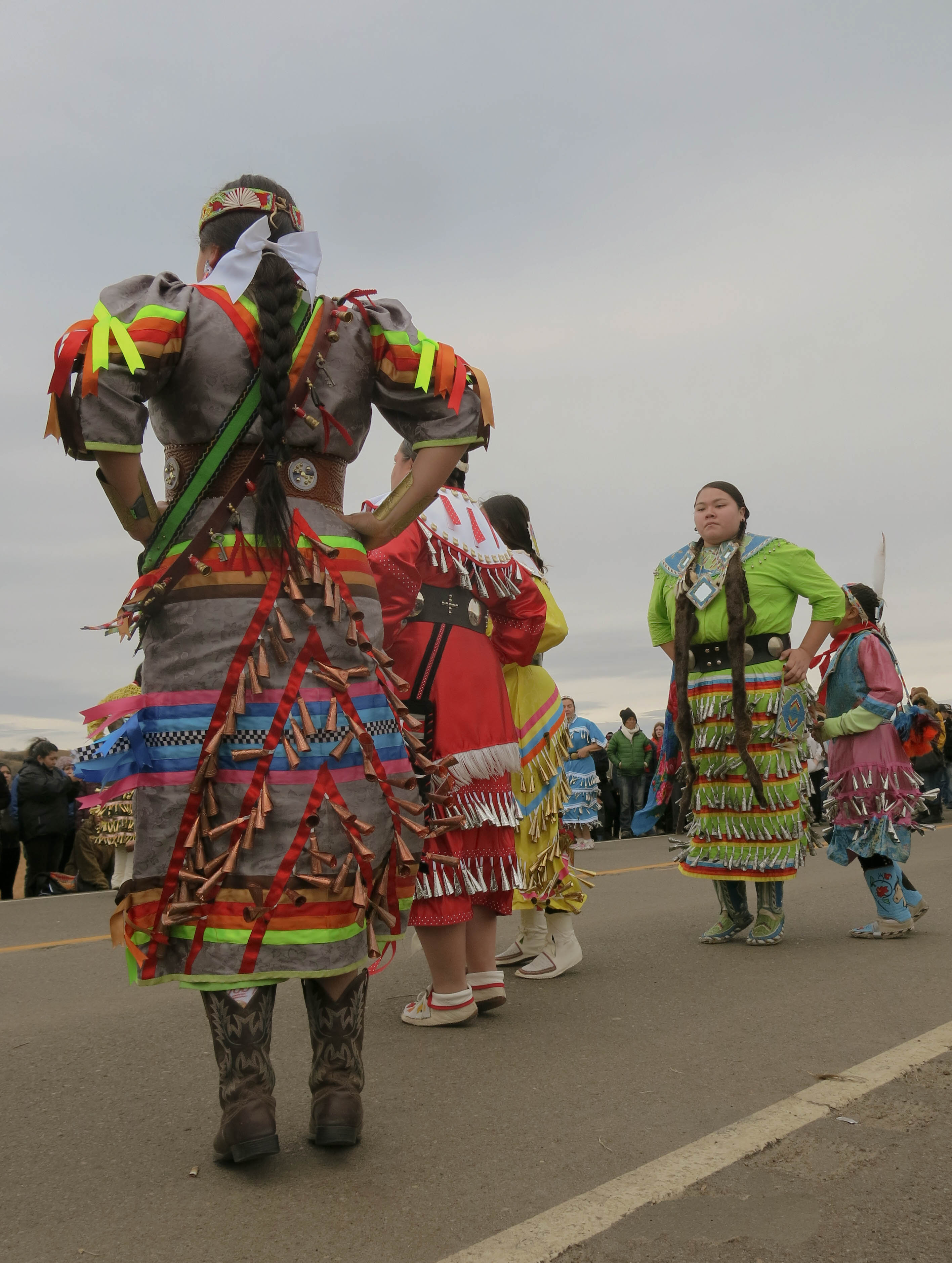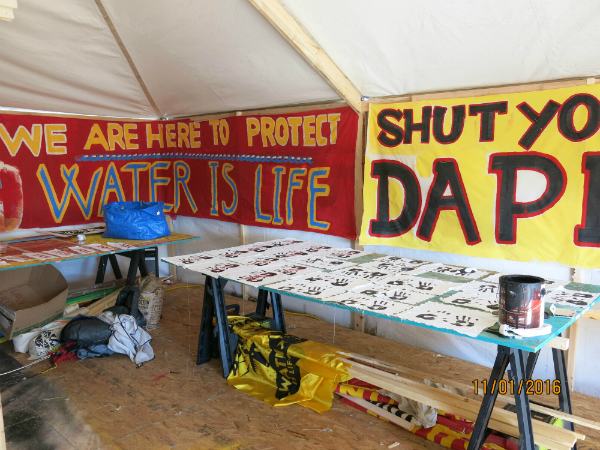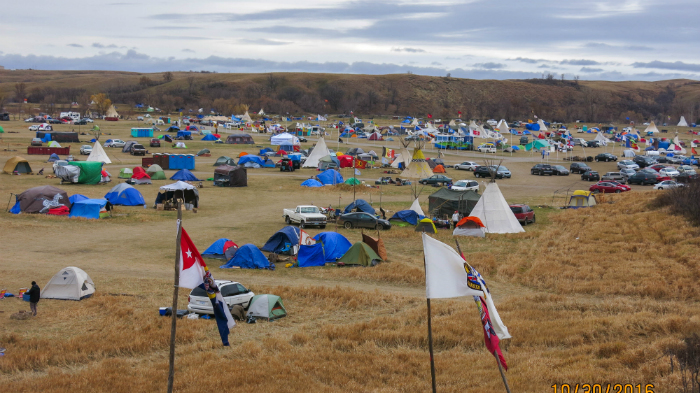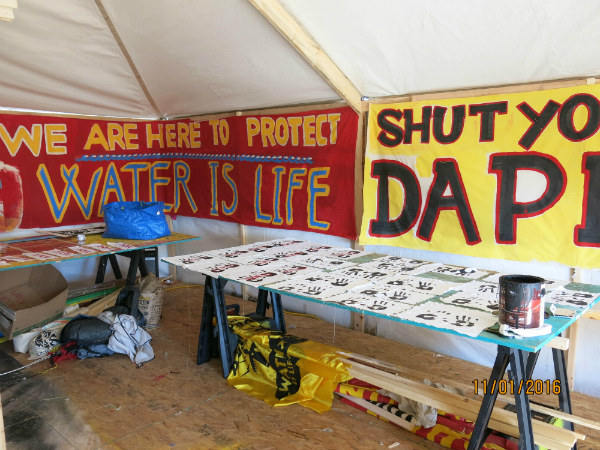Hey folks, my name is Brihannala Morgan and I’m a senior forest campaigner at RAN. While my work mostly involves working directly with Indigenous and frontline communities in Indonesia, I recently had the honor to attend the protests against the Dakota Access Pipeline at the Standing Rock reservation in North Dakota.

I’ve been getting quite a few questions about my recent trip to Standing Rock, and how best to support the #NoDAPL protests. Here are some suggestions I’ve been sharing with friends and allies from across the country — particularly with non-native friends who are looking for the best way to be a strong and respectful ally.

First, a few caveats: 1) These answers come from my personal experience over a short trip to the protests. They reflect what I learned in meetings with movement leaders — mostly members of the Indigenous Peoples Power Project (IP3) — but the needs and priorities of the camp will most likely evolve with time. 2) While RAN is in full support of the #NoDAPL protests and has been supporting this movement in many ways, these answers below are mine alone, and do not necessarily reflect RAN’s formal position.

With that in mind, here we go:
Q: Is financial support welcome? If so, where should I send money?
A: There are a ton of different fundraisers out there, and if you have a specific connection to one of those, or know the organizers, then supporting there is great. If you don’t have one in mind, then donating to the general support fund at donating to the general support fund at Stand with Standing Rock is a great way to go.
Q: Are there petitions I can sign? Which ones would be most effective?
A: Here are a few suggestions, from Stand with Standing Rock’s website , MoveOn, and Change.org. These have already gained significant traction and would be boosted by the support of you and your community.
Q: Are there actions in my area that I can join?
A: Yes! There are actions happening all over the country to challenge the banks trying to profit off this terrible project. You can get good information here and here. You can also connect with local organizations in your area, as well as national organizations like RAN, 350.org, Rising Tide, and others.
You can find all those groups on Facebook or via their own websites that have information on organizing actions at banks and other locations across the country. Or organize one yourself!
Q: What else can I do to support?
A: One easy thing to do is to make art, and share it in your community (or send it back to Standing Rock). Here is a great online document with beautiful resources complied by David Solnit which you can use. The more art, all over the country, the better!
Q: Should I go to Standing Rock?
A: Yes — with some strong caveats. There is a lot that needs to be done in camp, and there is no doubt that more people arriving in support of this movement would be a powerful statement. But please remember a few things:
1) The most important thing is a willingness to take leadership from the Indigenous community. If you are a non-Indigenous ally, it is highly unlikely you will be involved in any of the decision-making, and it’s possible that you may have little advance warning of events until they are happening. If you feel you would not be comfortable in that role, then arriving at the camp may not be the best choice for you.
2) Many people have specific skill sets that they want to use to support the camp and there may be an opportunity to plug in with those specific skills. There is an information tent and folks there looking to connect people with the best places to plug in and help — but the situation is highly dynamic and highly fluid. Most likely you’ll need to take the initiative to find a place to be helpful — but again, always within the framework of taking leadership from the Indigenous community.
There is a specific call out for people with some hard skills -— carpentry, medical, bodywork, winterizing, etc. If you have those skills, it will be very easy to find places to plug in. If you don’t have those specific much-needed skills, there is always work as a worker bee making art, chopping firewood, picking up trash, etc. You just have to be okay being flexible, willing, and checking any ego you might have about your skill set.
3) It is cold and windy! Be ready. Even at the end of October/early November, highs were only in the 40s some days. Bring firewood (whatever is already there will be needed for the winter), bring shelters you can heat, bring portable wood stoves if you can. And bring a shelter that won’t fly away. If camping in the cold and the wind is the only thing keeping you away, quite a few people are opting to stay a few nights at the nearby casino.

Of course, there are many incredible activists who are working on these issues across the country and I am sure they could add lots of valuable information to this.
Y’all know who you are, feel free to add comments!
#NoDAPL #StandingRock #Waterislife
